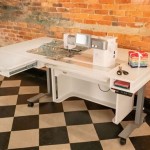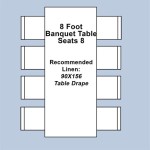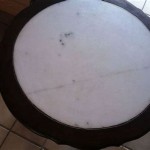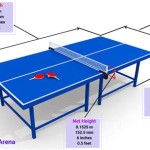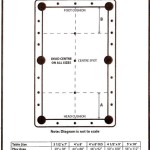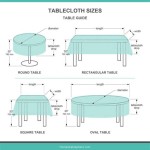How Much Space Do You Need For A Regulation Size Pool Table In Europe?
Determining the correct amount of space required for a pool table, specifically a regulation size one, is crucial before making a purchase and installation. This is especially pertinent in Europe, where living spaces can often be more compact compared to other regions. A poorly planned pool table installation can lead to restricted movement, compromised gameplay, and overall dissatisfaction. Understanding the dimensions of a regulation size pool table and the necessary surrounding space is paramount for creating a functional and enjoyable billiards room.
The term "regulation size" itself can be somewhat ambiguous. There are variations in pool table sizes that are considered within the acceptable range for professional or tournament play. It is important to clarify which size is being referenced to ensure accurate space calculations. Typically, a regulation size pool table refers to one that is either 8-foot or 9-foot in length, measured from the inside of one cushion to the inside of the opposite cushion. The width is generally half the length. Therefore, an 8-foot table measures 4 x 8 feet, and a 9-foot table measures 4.5 x 9 feet. However, these measurements only represent the playing surface; they do not account for the total dimensions of the table, including the rails and surrounding structure.
When calculating the space needed, the primary consideration is the cue length. Standard cue lengths are typically 57 or 58 inches. This length is vital because players need sufficient room to execute shots without obstruction from walls, furniture, or other obstacles. Insufficient space results in shortened strokes, awkward positions, and compromised shot accuracy, hindering the overall playing experience.
Calculating Minimum Room Dimensions Based on Cue Length
The minimum room dimensions are calculated by adding twice the cue length to the length and width of the pool table's playing surface. This calculation ensures players can comfortably use a standard cue on all sides of the table. For an 8-foot table (4 x 8 feet) and a 57-inch cue (4.75 feet), the calculation is as follows:
Width: 4 feet (table width) + 4.75 feet (cue length) + 4.75 feet (cue length) = 13.5 feet
Length: 8 feet (table length) + 4.75 feet (cue length) + 4.75 feet (cue length) = 17.5 feet
Therefore, the minimum room size required for an 8-foot pool table with a 57-inch cue is 13.5 feet by 17.5 feet. For a 9-foot table (4.5 x 9 feet) and a 57-inch cue, the calculation is:
Width: 4.5 feet (table width) + 4.75 feet (cue length) + 4.75 feet (cue length) = 14 feet
Length: 9 feet (table length) + 4.75 feet (cue length) + 4.75 feet (cue length) = 18.5 feet
Consequently, the minimum room size suggested for a 9-foot pool table with a 57-inch cue is 14 feet by 18.5 feet. It is important to note that these are the absolute minimum dimensions. Ideally, providing additional space beyond these figures is highly recommended for enhanced comfort and maneuverability.
Factors Influencing Ideal Room Size
While the above calculations provide a baseline, several factors can influence the ideal room size to accommodate a regulation size pool table. These factors revolve around player comfort, potential obstructions, and desired gameplay style.
Firstly, the skill level of the players should be considered. Beginner players may benefit from more space as they are more likely to require wider stances and less precise movements. Experienced players, on the other hand, might be more comfortable with slightly less space because their technique allows for more controlled strokes.
Secondly, the presence of any permanent fixtures or furniture within the room must be factored in. Columns, radiators, or built-in cabinets can significantly restrict cue movement and necessitate adjustments to the table's positioning or the use of shorter cues. Accurately measuring the distance between the pool table and any such obstructions is crucial for identifying potential problems before installation. If obstructions are unavoidable, consider using shorter cues, which are available in lengths ranging from 36 to 48 inches. These shorter cues are especially useful in tight corners or against walls.
Thirdly, the desired gameplay style should be a determinant. If the intention is casual play with friends and family, a slightly smaller room may suffice. However, serious players who intend to practice regularly or host competitive matches will undoubtedly require more space to execute advanced shots and maintain optimal performance. The ability to move freely around the table and address the ball from various angles is critical for serious gameplay.
Finally, the overall ambiance and intended use of the room should be considered. If the pool table is intended to be the centerpiece of a dedicated game room, ample space is desirable to create a comfortable and inviting atmosphere. However, if the pool table is being integrated into a multi-purpose room, compromises may be necessary to balance functionality and aesthetics. In such cases, careful planning and space-saving strategies are essential.
Practical Considerations for European Homes
In Europe, historical architecture and the prevalence of apartments often present unique challenges when installing a regulation size pool table. Many older buildings have smaller rooms and unconventional layouts that require careful consideration. Navigating narrow hallways and staircases with a large pool table can also be a logistical hurdle. Therefore, assessing the accessibility of the room is crucial before purchasing the table.
Furthermore, the availability of alternative cue lengths is vital in Europe. Due to space constraints, shorter cues are often a necessity. Ensuring a local billiards supplier stocks a variety of cue lengths is important for adapting to the specific room dimensions. Also, consider the weight of the pool table and the structural integrity of the flooring. Older buildings may have weaker floorboards that require reinforcement to support the weight of a full-size pool table. Consulting a structural engineer before installation is advisable in such cases.
Another factor relevant to European homes is the ceiling height. Low ceilings can restrict cue movement during vertical shots, particularly when using bridges. Measuring the ceiling height and accounting for the player's height and the cue's angle is essential for avoiding any inconveniences. If the ceiling height is a concern, consider opting for a slightly shorter cue or modifying the shooting stance to accommodate the limited vertical space.
In summary, determining the appropriate amount of space for a regulation size pool table in Europe requires a thorough assessment of the table dimensions, cue length, player skill level, potential obstructions, and the specific characteristics of the room. By carefully considering these factors, it is possible to create a functional and enjoyable billiards room that suits the unique challenges and constraints of European homes.

Pool Table Size Guide Dimensions Sizes

What Is A Full Size British Pool Table Liberty

Pool Table Size Guide Dimensions Sizes

American Pool V Home

What Is A Full Size British Pool Table Liberty

The Differences Between American British And N Pool Tables

Pool Table Size Guide Dimensions Sizes

Pool Table Size Guide Dimensions Sizes

What Is A Full Size British Pool Table Liberty

Take Your Cue Planning A Pool Table Room

